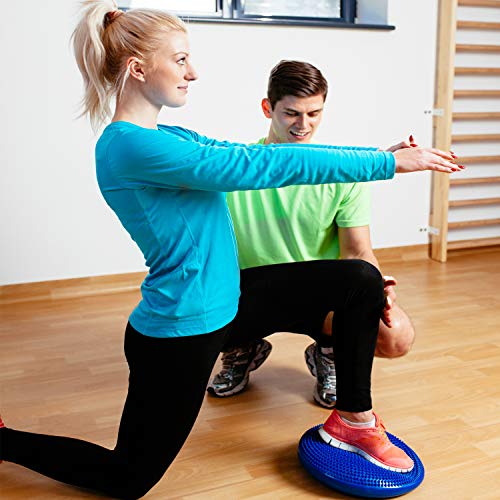Wobble board Treatment in Jaipur
Wobble board Treatment in Jaipur by dr arvind jaga. Wobble board treatment is a form of physiotherapy that involves using a wobble board, also known as a balance board, to improve balance, stability, and coordination. The wobble board is a circular board that is designed to be unstable, which requires the user to use their core muscles and engage in dynamic balance exercises.
During a wobble board treatment session, the patient stands on the wobble board and performs a series of exercises, such as balancing on one foot or performing squats. The wobble board’s instability challenges the patient’s balance and requires them to engage their core muscles to maintain stability.
Wobble board treatment is often used to rehabilitate patients recovering from ankle, knee, or hip injuries, as well as to improve balance and stability in older adults or individuals with neurological conditions.
The benefits of wobble board therapy include improved balance and stability, increased core strength, reduced risk of falls and injuries, improved joint range of motion, and improved athletic performance.
Overall, wobble board physiotherapy is a safe and effective physiotherapy that can help individuals recover from injuries, improve their physical function and quality of life, and prevent future injuries or medical problems.
What is Wobble board treatment ?
Wobble board treatment is a type of physiotherapy that involves using a wobble board, which is a circular board designed to be unstable. The instability of the board challenges the user’s balance, requiring them to engage their core muscles and perform dynamic balance exercises. Wobble board treatment is used to improve balance, stability, and coordination, especially in patients recovering from injuries or neurological conditions.
During a wobble board treatment session, the patient stands on the board and performs a series of exercises, such as balancing on one foot, squatting, or performing lunges. The wobble board’s instability makes these exercises more challenging, requiring the patient to use their core muscles and engage in dynamic movements to maintain their balance.
Wobble board treatment is often used to rehabilitate patients recovering from ankle, knee, or hip injuries, as well as to improve balance and stability in older adults or individuals with neurological conditions. It can also be used to improve athletic performance by enhancing balance and coordination.
Overall, wobble board treatment is a safe and effective form of physiotherapy that can help individuals improve their physical function and quality of life, reduce their risk of falls and injuries, and prevent future injuries or medical problems.
Benefits Of Wobble board therapy
Improved balance and stability: Wobble board therapy challenges the user’s balance and stability, which can lead to significant improvements in these areas.
Increased core strength: Wobble board therapy requires the user to engage their core muscles to maintain their balance, leading to improved core strength.
Rehabilitation after injury: Wobble board therapy can be used to rehabilitate patients recovering from ankle, knee, or hip injuries, helping them to regain their balance and stability.
Reduced risk of falls and injuries: By improving balance and stability, wobble board therapy can help to reduce the risk of falls and injuries, especially in older adults or individuals with neurological conditions.
Improved joint range of motion: Wobble board therapy can help to improve joint range of motion, which can be especially beneficial for patients recovering from injuries or medical conditions affecting the joints.
Improved athletic performance: Wobble board therapy can be used to improve balance and coordination, which can enhance athletic performance in athletes or individuals engaged in physical activities.
Convenient and accessible: Wobble board therapy can be done at home or in a physiotherapy clinic, making it a convenient and accessible form of treatment.
Overall, wobble board therapy is a safe and effective form of physiotherapy that can help individuals improve their physical function and quality of life, reduce their risk of falls and injuries, and prevent future injuries or medical problems.
